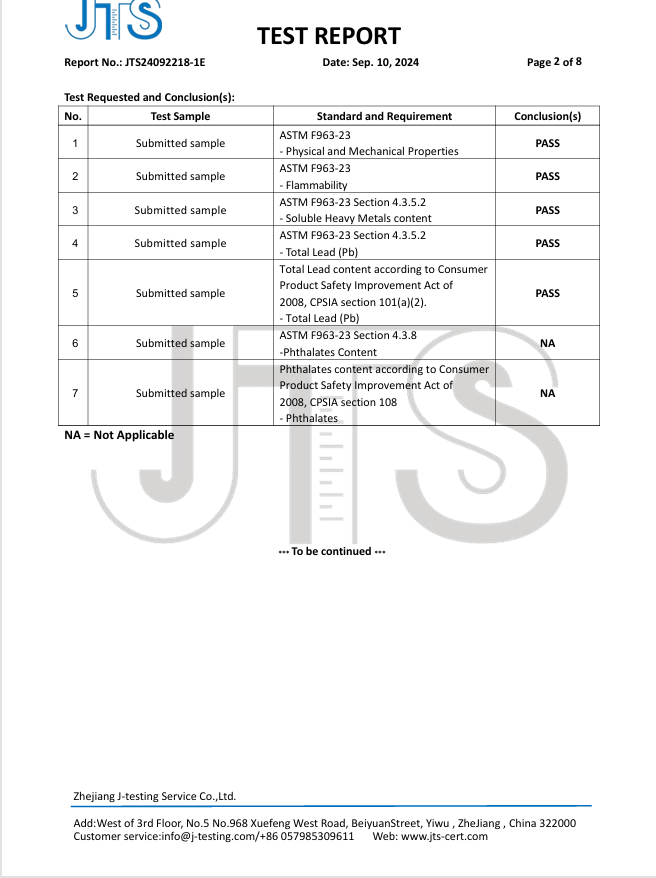Room303 No.10# Building No.285 Rongxing Road Songjiang District Shanghai +86-18217615209 [email protected]
ASTM F963 is a U.S. toy safety standard widely used to ensure the safety of toy Products, especially for children's toys. For plush toys, ASTM F963 covers a wide range of testing programs, and the following are some of the main testing content for plush toys:
1. Physical and mechanical testing
This part of the test ensures that the toy will not cause harm to children under normal use or reasonably foreseeable misuse. It mainly includes:
Sharp edges, small parts test, tensile strength test, drop test, torsion test, sharp point test, packaging film test
2. Flammability test
Fabrics and stuffing materials of plush toys need to be tested for flammability to specify the burning rate of the toys and the criteria for the use of combustible materials, to ensure that the plush toys will not cause fire hazards when in contact with small ignition sources.
3. Chemical Testing
Chemical substance testing in toys ensures that plush toys do not contain toxic chemicals that are harmful to children, mainly including:
Heavy metal content: Limit the content of heavy metals such as lead, cadmium, mercury, etc. to avoid children being exposed to harmful substances.
Phthalates test: Ensures that the phthalates content in plastic parts (e.g., eyes, nose, buttons) in plush toys meets safety standards.
Migratory Element Test: To detect the presence of migratory harmful chemical elements in toys, such as antimony, barium, arsenic and selenium.
4. Marking and labeling requirements
ASTM F963 strictly requires labels and warnings for toys. The labeling of plush toys must be clear and contain information such as applicable age groups, warning labels, and material descriptions to ensure that consumers can properly use and understand the potential risks of the product.
5. Acoustic performance
Plush toys with built-in sound devices are required to be tested for volume to ensure that the sound does not cause harm to children's hearing.
6. Microbiological Testing
For some specific plush toys (e.g., washable plush toys), microbiological testing is also required to ensure that a wet environment will not harbor bacteria or fungi that are harmful to children's health.
7. Battery and Electrical Safety
Plush toys containing batteries or electronic components need to comply with relevant electrical safety requirements.
8. Absorbent and Breathable
Plush toys contain absorbent materials (e.g. cotton), which are required not to absorb excessive liquids to prevent choking risks. At the same time, the breathability of the toys should be tested to ensure that it will not affect children's breathing.